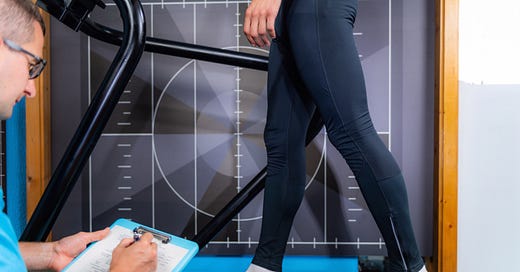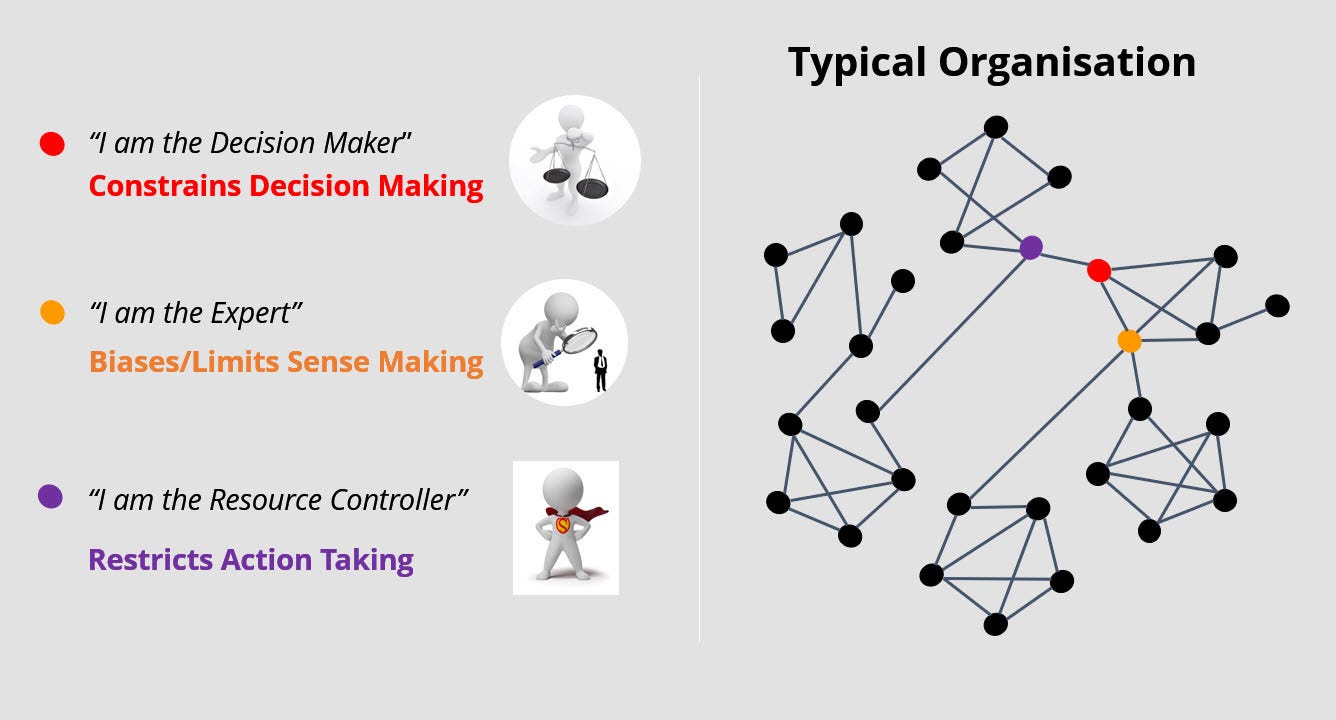Future fitness starts where you are
"One-size-fits-all" is actually "this size doesn't fit anyone".
Tourist: “Can you show me the road to Killarney?”
Local: “Well if I was you I wouldn’t start from here anyways.” 1
The above well-worn anecdote about a traveller in Ireland illustrates an obvious truth — wherever you want to get to, you have to start from where you are.
And yet how often do organisations overlook this simple fact in their attempts to get themselves fit for the future?
As with a personal journey to physical fitness — you have to start where you are.
I experienced this personally back in 2017 when I decided to lose weight and get fit.
A health practitioner friend recommended I first get a biomechanical assessment, so any underlying issues could be identified and addressed before I started heavy lifting that might otherwise make things worse.
I had a physio check me for misalignments, weaknesses and inflexibility.
He then referred me on to a podiatrist who set me up with tailor-made orthotic insoles to address some underlying foot-ankle-leg alignment issues of which I hadn’t been aware.
Since then, as my fitness has gone from strength to strength, it struck me how much this echoed my professional experience of helping organisations create future-fit cultures over the past 35 years.
Every organisation already has deeply embedded underlying conditions that are entirely unique.
These conditions are a huge inconvenience to the one-size-fits-all “best practice” approaches traditional consulting firms use to mobilise large numbers of junior consultants.
As a consequence, the unique underlying conditions of the client organisation get ignored, glossed over, or paid lip service.
Then, when their cookie-cutter interventions don't deliver the promised results — which by their own admission is in at least 70% of cases 2 — they never blame it on their inadequate methods but on the client’s “toxic culture”, “change aversion”, or “lack of senior executive support”.
Successful systemic change only occurs when the organisation’s underlying unique strengths, weaknesses, misalignments, dynamics, inflexibilities, etc. are adequately addressed.
Attempting to build new muscles on top of these underlying conditions without adequate understanding is a recipe for disaster.
If every time you went to the gym for a serious workout you wore my orthotic insoles it would do you more harm than good.
My insoles are crafted to compensate for my unique foot-ankle-leg issues. The chances of your unique underlying situation being the same are vanishingly small.
What you need is to understand and address your unique underlying issues — not proceed based on the assumption they’re the same as mine.
In the organisational domain, a useful way of approaching future fitness is starting from Peter Senge’s definition of leadership as “the capacity of a human community to shape its future”.
An organisation’s current strengths, weaknesses, misalignment, dynamics, inflexibilities, etc. set the limits on its current capacity to shape its future.
And in the vast majority of cases, this current capacity is a fraction of the organisation’s potential capacity.
Unpacking this a stage further, the capacity to shape its future depends on how, and how well, the organisation does three core activities:
Making sense of itself, its changing context, and its ability to create value
Making decisions about what to do — and what not to do
Taking action to create value and/or flush out new sense making data
For future fitness, these three core activities must work well together, be well aligned, mutually supportive, and collectively reinforcing.
In an increasingly uncertain and unpredictable world where organisations need to bring innovation, agility, and adaptiveness to life, the three core activities must also be iterated actively and distributed widely throughout the organisation.
Over time, organisations develop embedded legacy ways of doing sense making, decision making, and action taking.
In long-established organisations, many of these habits originated in a world that was much more stable, certain, and predictable.
And just as anyone trying to develop physical fitness after years of developing unhelpful habits, the unique pattern of misalignments, weaknesses, and inflexibility in how the three core activities dynamically relate must be addressed if the organisation is to develop strong and flexible future fit muscles to shape its future.
The underlying weaknesses, misalignments, and inflexibility in an organisation stem from attitudes and behaviours anchored in people’s mindsets about “the way we do things round here”.
The systemic pattern of these mindsets depends on key influencers — individuals, not necessarily in the most senior positions, whose mindsets, attitudes and behaviours systemically affect the mindsets attitudes and behaviours of others. 3
In the dozens of organisations I’ve worked with over the past 35 years, I’ve found three common key influencer mindsets anchor organisations to the legacy mindsets, attitudes and behaviours of their past:
“I am the decision maker” — key influencers with this mindset create decision making bottlenecks, generate self-imposed stress for the ‘decision makers’, and lead to poor quality decisions due to overload and fragmented attention.
“I am the expert” — key influencers with this mindset distort, dominate, and downgrade collective sense-making, curtail the capacity for new ideas, and contribute to poor quality decisions due to deficient sense making.
“I am the Resource Controller” — key influencers with this mindset constrain the effective utilisation of resources by saying ‘no’ too often, preventing actions necessary to create value and/or to flush out new sense making insights.
When one-size-fits-all “best practices” are laid on top of an underlying substrate of weaknesses, misalignments, and inflexibility the organisation will not only fail to become future-fit, but will exacerbate underlying problems and increase unnecessary stresses on its internal systems — which ultimately means on its people. 4
To avoid this debilitating damage, organisations need to focus their efforts precisely and deeply on shifting the mindsets of the genuine key influencers whose attitudes and behaviours block or unlock the capacity of the organisational community to shape its future. 5
Questions for reflection
Which of the three essential activities — sense making, decision making, and action taking — are most constrained in your organisation?
Are there initiatives already underway in the organisation which are attempting to build sense making, decision making, and action taking muscles but doing so on top of underlying misalignments, weaknesses, and inflexibility?
Which individuals, not necessarily in the most senior positions, are key influencers because their current mindsets, attitudes and behaviours systemically constrain the organisation’s capacity to shape its future?
There are numerous versions of this anecdote but here’s one source: Eight ways not to ask for directions in Ireland
See McKinsey’s admission here. Note they say: “We know, for example, that 70 percent of change programs fail to achieve their goals, largely due to employee resistance and lack of management support”. What they don’t admit is that “We know, for example, that 70 percent of change programs fail to achieve their goals, largely due to them being based on the one-size-fits-all approaches of firms like McKinsey”.
For more on how key influencer mindsets systemically influence people’s awareness of the way we do things round here, see this previous article on Seeing Culture.
This is one reason people are experiencing more workplace stress than ever.
For more details on why and how to go about this, download my free 22 page guide to The Five Fatal Habits.






